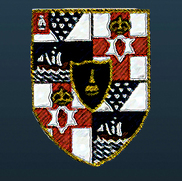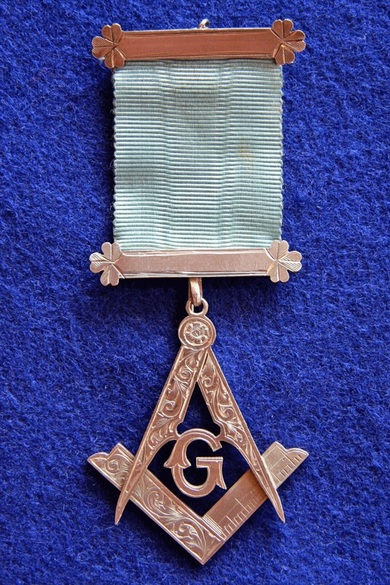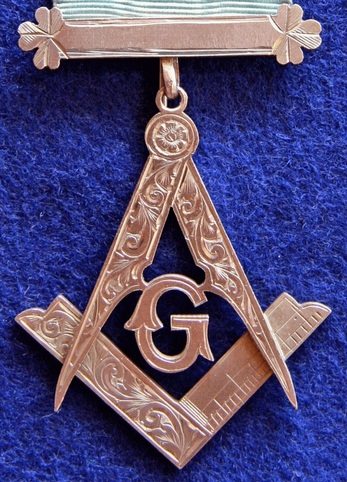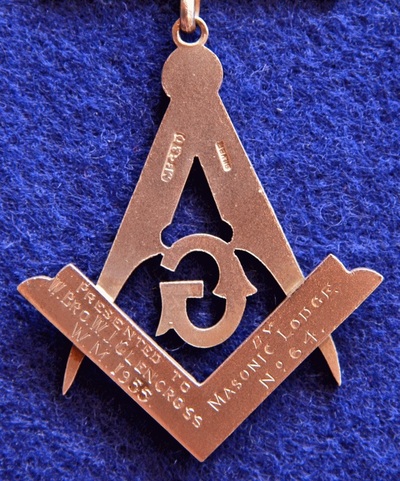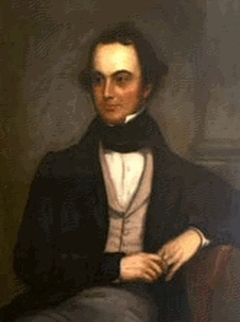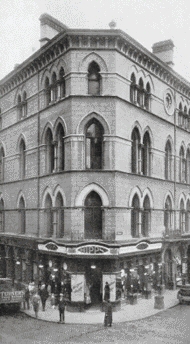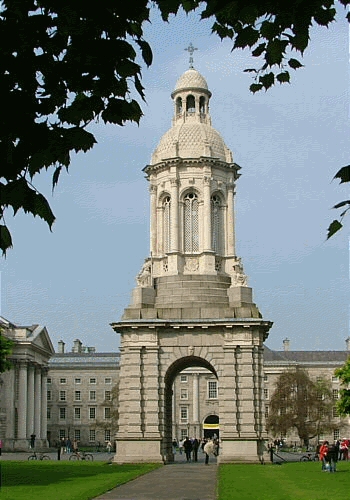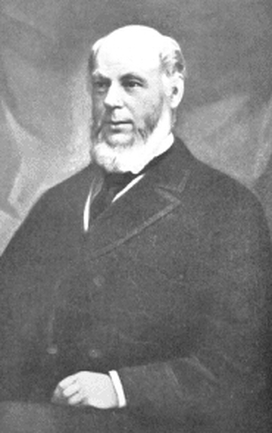Sir Charles Lanyon Lodge No. 64
Past Master's Jewel 1955
.
Obverse of Jewel
Silver Past Master's Jewel suspended from a sky blue ribbon by two silver bars.
Short History of Warrant No. 64
Warrant No. 64 Issued to brethren in DUBLIN on the 1st February, 1737.
Warrant No. 64 was returned to Grand Lodge on 8th July, 1825.
Warrant No. 64 was reissued on the 6th October, 1825 to hold a Lodge in the village of Cross, close to BALLYMONEY, County Antrim.
Warrant No. 64 was suspended on the 6th August, 1840 but restored on the 4th June, 1846.
Warrant No. 64 was finally sent up in trust on the 6th August, 1862.
[The above represents the barest of facts relating to Warrant No. 561 before same reissued to SIR CHARLES LANYON LODGE NO. 64 - the IRISH MASONIC RECORDS cd-rom gives a very full account of the Lodges who held Warrant No. 64 for the years set out above]
Warrant No. 64 was returned to Grand Lodge on 8th July, 1825.
Warrant No. 64 was reissued on the 6th October, 1825 to hold a Lodge in the village of Cross, close to BALLYMONEY, County Antrim.
Warrant No. 64 was suspended on the 6th August, 1840 but restored on the 4th June, 1846.
Warrant No. 64 was finally sent up in trust on the 6th August, 1862.
[The above represents the barest of facts relating to Warrant No. 561 before same reissued to SIR CHARLES LANYON LODGE NO. 64 - the IRISH MASONIC RECORDS cd-rom gives a very full account of the Lodges who held Warrant No. 64 for the years set out above]
History of Sir Charles Lanyon Lodge No. 64
It is shown in the Minutes of the Grand Lodge Board of General Purposes of 1st June, 1891 that they read a Memorial from Bros. S. Nettleton, Johnston and Baxter and eight others for a Warrant to hold a Lodge in Belfast. Recommended by Lodges 69, 659 and 29 and by the P.D.G.M. of Antrim. Regular fee enclosed. The Board recommended the issue of a Warrant to be numbered "64".
At the Grand Lodge Meeting of 4th June, 1891 this recommendation was approved and the Warrant numbered 64 was to be re-issued to "Sir Charles Lanyon Lodge" in Arthur Square, BELFAST, which happened on 8th June, 1891.
Series three Vol. 6 of the extant Grand Lodge Registers shows:-
William J. Nettelton (31); Henry Johnston (686) and Henry Baxter (31) registered along with 8 others, 8th June 1891.
The Sir Charles Lanyon Lodge celebrated it's centenary in 1991 but unfortunately is no longer at Labour.
At the Grand Lodge Meeting of 4th June, 1891 this recommendation was approved and the Warrant numbered 64 was to be re-issued to "Sir Charles Lanyon Lodge" in Arthur Square, BELFAST, which happened on 8th June, 1891.
Series three Vol. 6 of the extant Grand Lodge Registers shows:-
William J. Nettelton (31); Henry Johnston (686) and Henry Baxter (31) registered along with 8 others, 8th June 1891.
The Sir Charles Lanyon Lodge celebrated it's centenary in 1991 but unfortunately is no longer at Labour.
Short biography of Sir Charles Lanyon
Sir Charles Lanyon (1813-1889) was an English architect of the 19th Century. His work is most closely associated with Belfast, Northern Ireland
Lanyon was born in the seaside town of Eastbourne, Sussex (now East Sussex) in 1813. Following his education, he moved to Dublin in the 1830s, working as an apprentice civil engineer at the city's Irish Board of Works. Whilst here he married the daughter of his tutor Jacob Owens, whose son Thomas Ellis Owen was also a noted architect. He followed this with a short time as County Surveyor in Kildare, before moving on to Antrim in 1835. He remained County Surveyor of Antrim until 1860.
His famous works include Queen's University. He designed the main building of Queen's University of Belfast in 1849. Another was Crumlin Road Gaol and Courthouse - Other works by Lanyon in Belfast include the Linenhall Library, Belfast Castle, the Palm House at the Belfast Botanic Gardens, Stranmillis House, The Assembly Rooms in Waring Street and both the Queen's Bridge and Ormeau Bridge.
Sir Charles Lanyon also designed the Custom House in 1857, considered by many to be Belfast's finest architectural feature.
Sir Charles Lanyon was elected Mayor of Belfast in 1862, and Conversative MP for the city between 1865 and 1868. In 1868 he was also knighted. He died in his Whiteabbey home in 1889 and buried in Newtownbreda graveyard.
|
R.W. Bro. Sir Charles Lanyon was a Member of and Past Master of Lodge 7. He was Provincial Deputy Grand Master of Belfast and North Down from 1863 to 1868, Provincial Deputy Grand Master of Antrim from 1868 to 1883 and Provincial Grand Master of Antrim from 1883 to 1889. |
A later portrait of
R.W. Bro. Sir Charles Lanyon |
